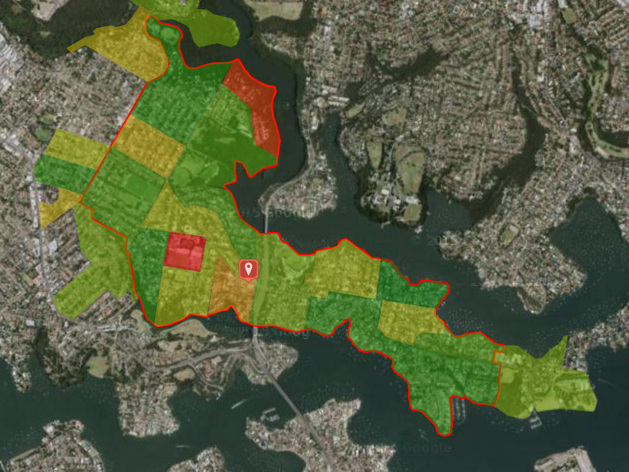After 6 months I’m pleased to announce that our real estate/suburb offering is moving out of its parent brand, NationMaster and out into the world with a new name, Microburbs. We’ll leave the international stats to NationMaster while we focus on Australian suburbs.
What are our Microburbs? They’re small areas typically of 200-800 people defined by demographic, economic, transport and geographic features. The Australian Bureau of Statistics does great work drilling down into the population geography of Australia. We draw on that analysis and many other sources to present a detailed view of neighbourhoods that we think is far more useful and relevant to householders than the customary suburb view. We still show you suburb level information, but we also show you the microburbs within.
Our mission is still the same – to give buyers all the information they need to decide whether to buy a property. But as we talked to home buyers and pored endlessly over our huge database, we had a realisation we need to share:
Suburbs are broken!
We’re not talking about a lack of public transport or amenities, or decline in community (though we’ll have plenty to say on these topics later). We’re talking about the very definition of suburbs – that they’re overused.
When people search for a property they tend to pick a suburb that fits their criteria, then look for properties in that suburb. This has two big problems:
The first is that suburbs are really diverse places, containing several distinct neighbourhoods, or microburbs.
Take the prestigious Hunters Hill in Sydney, known for its waterfront mansions and sandstone cottages, regularly starring on lists of the most affluent suburbs. Hunters Hill is actually 20 separate microburbs. One is a large public housing estate. One is a boys’ boarding school. Even after you exclude those, one has a median income of $989 per week, which is the average for Sydney. Another has a median income of $2,937.
 (Median Incomes for Hunters Hill on Microburbs)
(Median Incomes for Hunters Hill on Microburbs)
The second is that suburbs are big places, and the convenience of living in the lifestyle hub can be very different to living at the fringes.
If you’re out shopping in nearby Chatswood on a Sunday afternoon and need to be home in Hunters Hill on public transport by 3pm, you’ll really need to know your address. If you’re near the main road you can leave at 2:30. If you’re on the southern end it’s 1:30, because you’ll need an extra bus change, and an extra hour, to get there. And this an area that still has buses on a Sunday afternoon! In other suburbs, being in the wrong microburb means a long walk from public transport.
(http://www.transportnsw.info)
Microburbs.com.au is a fantastic tool for understanding your immediate locality: getting to know your neighbours without counting people a kilometre away who you’ll never meet. Lifestyle is about your street, your home, and where you can get to.
Type in any address in Australia here.
Speak Your Mind